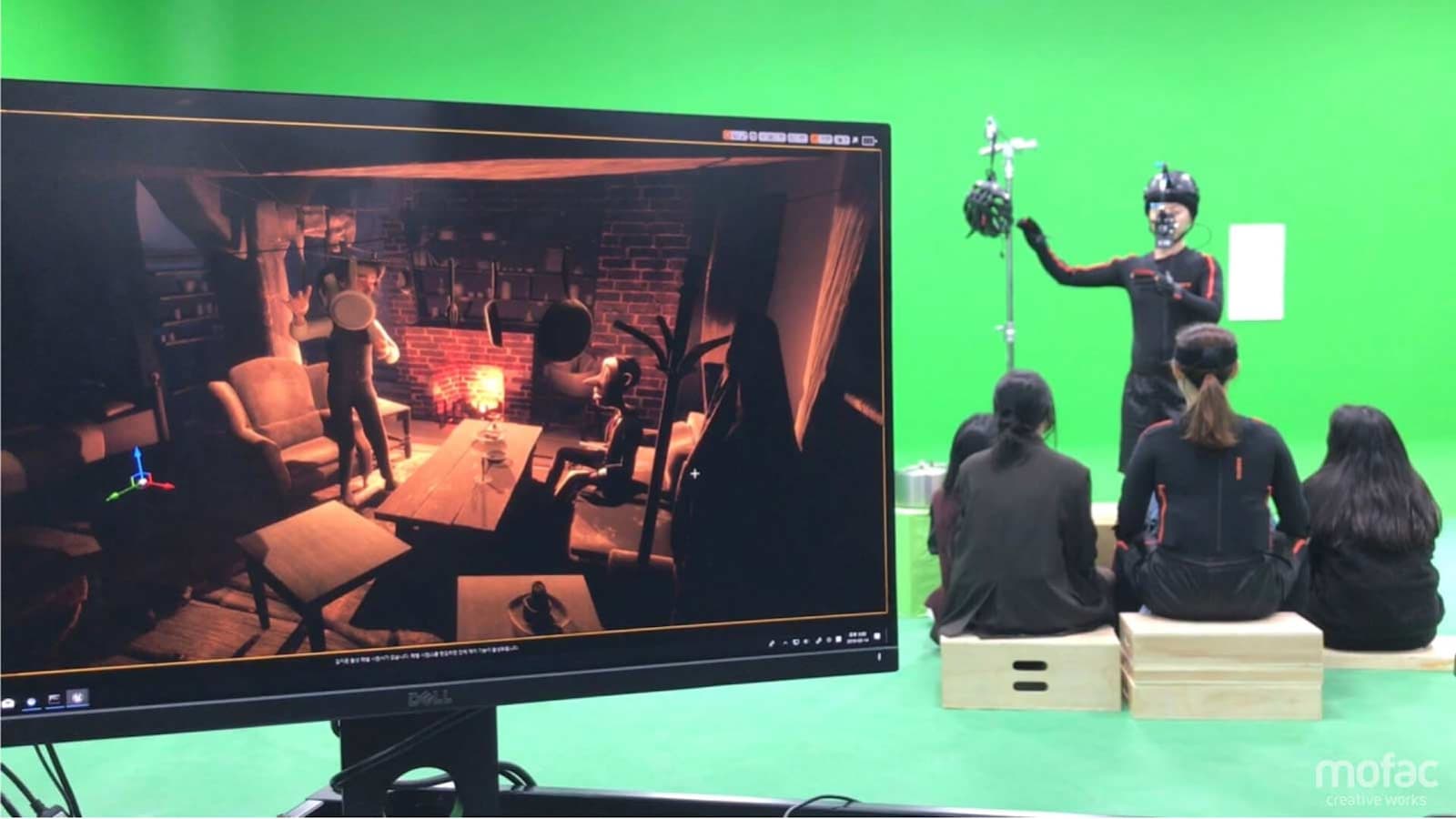The animation industry is constantly evolving, with real-time animation techniques cutting a promising path in rendering 3D characters with lifelike movement, all in an instantaneous time frame. The marvel of live animation, enabled by motion capture systems, extends the horizons of possibilities for animators. This technology is not just facilitating the rendering of 3D characters, but also reshaping the animation landscape by enabling directors to preview the animation or provide a live feed in the heat of the performance. This article offers a deep dive into the world of real-time animation techniques for crafting stunning visuals.
Benefits of Embracing Real-Time Animation Techniques
The adoption of real-time animation techniques can significantly elevate your animation projects. Here are some key advantages of using real-time animation techniques:
- Flexibility: Real-time animation affords you the luxury to easily modify the camera position, text, or language, without the need for complete re-rendering. This scalability lets you adapt your animations per need and offer services tailored to your clients’ diverse preferences;
- Prolong a Campaign: Leverage real-time animation software like Adobe Character Animator to create engaging and timely social media posts that extend the life of your client’s main campaign and carve a robust social media strategy;
- Fan Interaction: Enliven your animated characters and bring them to events for fan interactions. This level of interactivity makes real-time animation an appealing tool for creating unique and memorable experiences for viewers;
- Expedite Animation Scripting: Real-time animation techniques enable the exploration of stories that, otherwise, may be limited by rendering time. Real-time review and adjustment of shots with the director not only save time but also intensify the creative brainstorming process.
Crafting High-Quality Content with Real Time Animation Techniques
Creating professional-grade real-time animations requires a command over potent animation tools and software. Companies like Epic Games offer free animation tools and comprehensive tutorials to guide animators through new software. Animators can use free 3D modeling software and tools to create the characters and props to be animated. Your creations can be imported into the Unreal Engine for animation.
In the Unreal Engine, the Sequencer allows for the placement of keyframes, which gives animators the flexibility to craft complex animations. Moreover, Blueprint scripts can define controls and trigger character animation, eliminating the need for programming. The ‘Control Rig’ feature provides increased control over character animation in the engine.
The Challenges of Real-Time Animation Techniques
While real-time animation techniques have opened up new dimensions in animation, mastering these techniques can be laden with challenges. Some of these include:
- Learning New Tools: Navigating new tools and software can be intimidating, especially for animators accustomed to traditional animation techniques;
- Quality Concerns: The animation industry has high standards. Producing animations that meet these expectations while using real-time techniques can be a challenge;
- Data Quality: Real-time animation often depends on low-quality data. Cleaning and processing this data for usability can be a tedious task;
- Integration: Implementing real-time animation techniques into an established production pipeline can be challenging and require a high degree of collaboration with other departments.
Best Practices for Real-Time Animation Techniques
To ensure your real-time animation content excels, follow these best practices:
- Plan: Outline your shots and overall story before beginning the animation process. This can save time and reduce unnecessary iterations;
- Optimize: Ensure smooth running of your animation by optimizing your assets for real-time rendering;
- Use Motion Capture: This technology can help create realistic animations efficiently;
- Learn Your Tools: Use tutorials to learn the features of your real-time animation software. This can improve efficiency and animation quality;
- Iterate Often: Take advantage of the immediate feedback provided by real-time animation by iterating frequently;
- Keep It Simple: To ensure smooth running across various devices and platforms, keep your animations simple and refrain from using complex animations.
Top Tools and Software for Real-Time Animation Techniques
Several potent tools and software are available for creating real-time animations. Some of the top ones are:
- Unreal Engine: Highly popular for real-time animation, it boasts a user-friendly interface and a wide array of features;
- Unity: Another popular choice, widely used in successful games and animations;
- Blender: A powerful, free, and open-source 3D modeling and animation software with a large supportive community;
- Maya: Widely used in the film and game industry for its extensive features for character animation;
- Cinema 4D: Chosen by motion graphics artists for its user-friendly interface and comprehensive tools for character animation.
Making the Most of Online Animation Tools and Resources
There is a wealth of resources available online to help you master real-time animation techniques. Use them to your advantage. From tutorials on how to use tools like Unreal Engine to instructional videos on 3D animation software like Blender and Maya, you will find a plethora of valuable resources.
Keeping Up with Animation Trends
Keeping pace with the rapidly evolving animation industry is essential for every animator. Stay informed about the latest animation trends and innovations by attending animation workshops, and webinars, and reading industry blogs.
Comparative Table
| Feature/Software | Unreal Engine | Unity | Blender Grease Pencil | Adobe Character Animator |
|---|---|---|---|---|
| Core Strengths | High-fidelity visuals, extensive use in AAA games and virtual production | Versatility in game development, supports a wide range of platforms | 2D animation within a 3D environment, open-source | 2D real-time animation, easy integration with Adobe suite |
| Real-Time Rendering | Advanced, with support for ray tracing and global illumination | Highly capable, supports various rendering paths | Not primarily designed for real-time 3D rendering, but fast preview for 2D | Optimized for 2D characters, with webcam-driven motion capture |
| Interactivity | Blueprint visual scripting, extensive interactivity for games and simulations | C# scripting, robust asset store for interactive elements | Limited compared to game engines, but supports basic interactions | High, especially with live performance and streaming |
| Ease of Use | Steep learning curve, but extensive documentation and community resources | User-friendly with a vast community and resources | Intuitive for 2D artists, learning curve for 3D functionalities | User-friendly, especially for those familiar with Adobe products |
| Integration | Seamless integration with film and VFX pipelines, supports major 3D formats | Wide support for 3D formats, integrates well with external tools and services | Integrates with other 3D software via import/export | Integrates within the Adobe Creative Cloud ecosystem |
| Use Cases | AAA video games, virtual production, architectural visualization | Indie to AAA video games, interactive media, education | 2D animation, storyboarding, concept art | Live broadcasting, YouTube content, educational videos |
| Pricing | Free for creators, with a royalty model for commercial products | Free personal plan, plus subscription tiers for professionals | Free and open-source | Subscription-based as part of Adobe Creative Cloud |
Video Guide
To answer all your questions, we have prepared a video for you. Enjoy watching it!
Conclusion
Embracing real-time animation techniques can significantly elevate your animation projects by offering flexibility, interactivity, and the ability to swiftly alter your animation. However, the process may present challenges, including mastering new tools, ensuring high quality, managing data quality, and integrating with existing pipelines. By adopting best practices, leveraging the right tools, and staying current with industry trends, you can overcome these challenges and create stunning, high-quality real-time animations.



